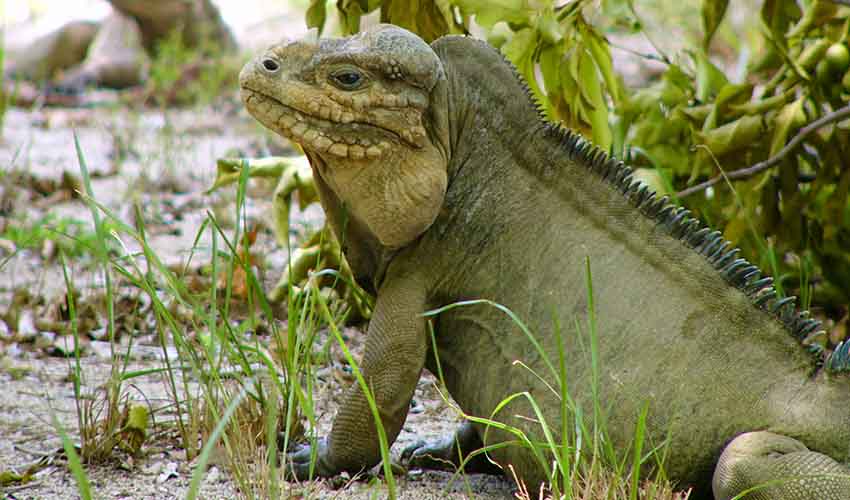Found only on Mona Island, a small limestone island between Puerto Rico and the Dominican Republic, it is the largest native land animal in the region and an extraordinary example of island evolution. Often called the “Caribbean dragon,” this impressive iguana is a living link to a prehistoric past, perfectly adapted to survive in the hot, rocky, and arid conditions of its isolated home. Its presence on Mona Island adds a touch of ancient majesty to the sun-scorched landscape, where it basks on cliffs and limestone ledges, blending almost seamlessly into its surroundings.
Physically, the Mona ground iguana is both powerful and elegant. Their tough, leathery skin is usually gray or brown, sometimes tinged with soft blues, greens, or rusty oranges that shimmer in the tropical sun. A row of pointed spines runs down the back, giving the lizard its distinctive dragon-like appearance. Their strong limbs and sharp claws are perfect for climbing and digging, while their muscular tails—lined with ridged scales—serve as both balance tools and defensive weapons. When threatened, they can deliver a surprisingly painful tail whip, a technique that has helped them fend off predators for thousands of years. Despite their rugged look, these iguanas are primarily herbivorous, feeding on leaves, flowers, and fruits of native shrubs and cacti, especially the prickly pear cactus, which provides them with both food and water in the island’s dry environment.
Behaviorally, the Mona ground iguana is as fascinating as it is hardy. These reptiles are diurnal, spending much of the day basking in the sun to warm their bodies before venturing out to feed. They dig burrows or find shelter in crevices to escape the midday heat and predators, including feral pigs and cats introduced to the island. During the breeding season, males become territorial and engage in elaborate displays—head-bobbing, push-ups, and tail movements—to court females or challenge rivals.
Distribution
 Puerto Rico
Puerto Rico Official estimate
Official estimate
Anything we've missed?
Help us improve this page by suggesting edits. Glory never dies!
Suggest an editGet to know me
Terrestrial / Aquatic
Altricial / Precocial
Polygamous / Monogamous
Dimorphic (size) / Monomorphic
Active: Diurnal / Nocturnal
Social behavior: Solitary / Pack / Herd
Diet: Carnivore / Herbivore / Omnivore / Piscivorous / Insectivore
Migratory: Yes / No
Domesticated: Yes / No
Dangerous: Yes / No




